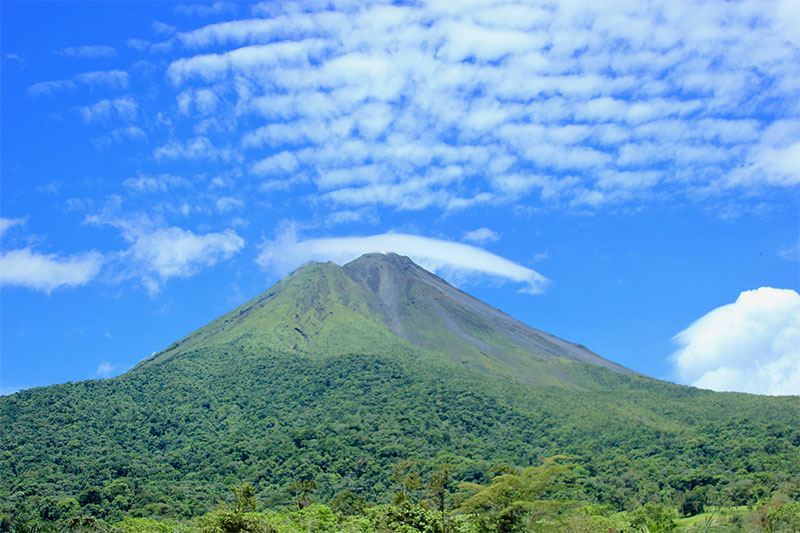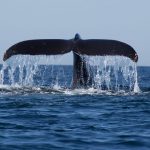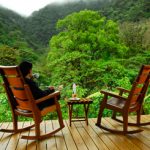[one_full last=”yes” spacing=”yes” center_content=”no” hide_on_mobile=”no” background_color=”” background_image=”” background_repeat=”no-repeat” background_position=”left top” hover_type=”none” link=”” border_position=”all” border_size=”0px” border_color=”” border_style=”” padding=”” margin_top=”” margin_bottom=”” animation_type=”” animation_direction=”” animation_speed=”0.1″ animation_offset=”” class=”” id=””][fusion_text]
From beaches to tropical rainforests, here are 5 Beautiful National Parks In Costa Rica everyone should visit at least once.
[/fusion_text][/one_full]
1. Corcovado National Park
Location: Los Patos Sirena Trail, Puntarenas Province, Costa Rica (Southwest Costa Rica, Osa Peninsula)
Top Hotel In The Area: Copa De Arbol
Why not a take a stroll through what many consider the best rainforest in all Central America? “The Corcovado forests are just as impressive in height as the best forests I have seen in the Amazon basin or the dipterocarp forests of Malaysia and Indonesia,” wrote Gary Hartshorn in Costa Rican Natural History.[/fusion_text]
Some of the most endangered and rarely seen animals are spotted here, including jaguars, Scarlet Macaws, red-backed squirrel monkeys, and Baird’s Tapirs. Hammerhead sharks live in the area, so be careful if you take a dip in the ocean.
Other facts about Corcovado National Park:
- There are over 400 species of birds in the park
- There are sharks and crocodiles in the waters of the estuaries of the Rios Claro and Sirena. Experts advice crossing at the shallowest point as far upstream as possible.
- There are 5 ranger stations in the park; 2 offer camping, water, and radio/telephone services.
[/fusion_text][/one_full][separator style_type=”double” top_margin=”20px” bottom_margin=”40px” sep_color=”” border_size=”” icon=”” icon_circle=”” icon_circle_color=”” width=”” alignment=”center” class=”” id=””]
2. Manuel Antonio National Park
Location: Cantón de Aguirre, Puntarenas, Costa Rica (Just south of Quepos, on the central Pacific coast)
Top Hotel In The Area: Arenas del Mar
It’s places like Manuel Antonio National Park that lend Costa Rica its name, which translates to “Rich Coast.” Manuel Antonio National Park is a combination of white-sand beaches, coral reefs and rugged rainforests. The park’s bright white beach sand runs toe-to-toe with an evergreen forest that touches the water during high tide. While it’s one of the smaller parks in the country, it remains the most popular for good reason.[/fusion_text]
When you’re done exploring the coastline and soaking up sun on the sandy shores, there are 680 hectares (just over 2.6 miles) of hiking trails that start from the coast and reach into the lush tropical mountains. Located just off the coast are 12 small isles where visitors frequently spot dolphins and the occasional school of migrating whales.
You can explore the park’s many trails on your own or embark on a guided tour or activity.
Popular activities at the park include:
- White water rafting
- Tubing
- Ocean kayaking
- Dive tours
- + more
[/fusion_text][/one_full][separator style_type=”double” top_margin=”20px” bottom_margin=”40px” sep_color=”” border_size=”” icon=”” icon_circle=”” icon_circle_color=”” width=”” alignment=”center” class=”” id=””]
3. Tortuguero National Park
Location: Limón Province, Costa Rica (Northern Caribbean coast)
Top Hotel In The Area: Hotel Manatus
Tortuguero National Park was established in 1975 and remains a protected wilderness area famous for the many sea turtles that use its beaches as nesting grounds, including the endangered green turtles. You can boat or canoe along the park’s freshwater lagoons and creeks which serve as home to caiman, seven species of sea turtles, and 50 species of freshwater fish. The luckiest of adventurers get a chance to see endangered West Indian Manatees.[/fusion_text]
The area was once a collection of volcanic islands, but alluvial sediments from surrounding mountains created a complex of marshy islands. Today the area is a combination of beaches, canals, lagoons, wetlands and forestry, allowing for incredible biodiversity.
Sea turtles are a main draw to Tortuguero, but so too are the beautiful beaches that reach right up to a tropical rainforest housing birds, monkeys, and unmatched beauty.
As of 2017, a small southern portion of the park has been closed to visitors to protect an endangered jaguar habitat. Most visitors stay 15 km to the north of this area anyway, closer to Tortuguero Village, nesting observation beaches, and Archie Carr Refuge.
[/fusion_text][/one_full][separator style_type=”double” top_margin=”20px” bottom_margin=”40px” sep_color=”” border_size=”” icon=”” icon_circle=”” icon_circle_color=”” width=”” alignment=”center” class=”” id=””]
4. Monteverde National Park
Location: Carretera a Reserva de Monteverde, Provincia de Puntarenas, Monte Verde, Costa Rica (3.6 miles (6 km) SE of Santa Elena, Monteverde)
Top Hotel In The Area: Belmar
Monteverde Cloud Forest Reserve is astonishingly beautiful and incredibly diverse. You’ll see elfin woodlands naturally sculpted by wind, massive trees filled with blooming orchids, and vines that reach steep up into the clouds. The natural preserve was enacted in 1972, when the land became threatened by local farmers looking to homestead and expand their farms into the forest. All 10,500 hectares (just under 26,000 acres) remain protected under the Tropical Science Center.[/fusion_text]
Explore the park’s trails on your own or sign up for group or private tours. The trails are well-maintained, comfortable sneakers are fine; you do not need hiking shoes or rubber boots. You can zip line through the forest before visiting the park’s restaurant, gallery and souvenir shop, all of which are open from 7 am to 9 pm daily.[/fusion_text][/one_full][separator style_type=”double” top_margin=”20px” bottom_margin=”40px” sep_color=”” border_size=”” icon=”” icon_circle=”” icon_circle_color=”” width=”” alignment=”center” class=”” id=””]
5. Arenal National Park
Location: La Fortuna – El Castillo, Provincia de Alajuela, Costa Rica
Top Hotel In The Area: Arenal Nayara / Nayara Springs
No list of national parks of Costa Rica would be complete without including the Arenal National Park. Home to Costa Rica’s biggest and most iconic volcano, the 5,357 ft. tall Arenal Volcano, the park spans 29,692 acres. The Arenal National Park is actually part of the much larger, 504,000 Arenal Conservation Area which protects the flora and fauna between the Tilaran and Guanacaste mountain ranges.[/fusion_text]
The Arenal area has become one of Costa Rica’s most popular destinations over the past two decades thanks to an amazing mix eco and adventure tours to choose from. Bird lovers can find over 800 species of birds within the parks boundaries as well as monkeys, sloths, jaguars, deer, coati, and various types of snakes and frogs. Some of the best ways to enjoy the incredible flora and fauna are river safari floats, guided hiking tours, and of course the famous hanging bridges. The picturesque La Fortuna Waterfall plummets 200 ft from the rainforest into a large pool below that makes for a refreshing and memorable swim. Last but not least, one of the most popular natural attractions in the area are the various thermal hot springs. Long believed to have natural healing powers, these all natural springs are heated by the volcano itself and are the perfect way to end a long day of adventuring and exploring.
For those with more of a taste for adventure Arenal is also called “the adventure sports capital of Costa Rica” due to the numerous activities available in the area. Venture into the rainforest for extreme sports like white water rafting, ATVs, mountain biking, waterfall rappelling, and the canopy zip-line tour or head out onto the 33 sq mile Lake Arenal for kayaking, stand up paddle boarding and fishing for rainbow bass.[/fusion_text][/one_full]








